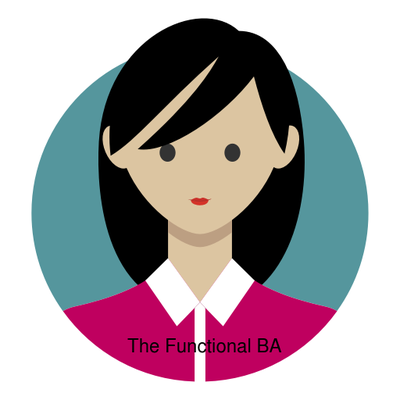AI is unlikely to fully replace Business Analyst (BA) jobs, but it will significantly change them.
Here’s a breakdown of how Business Analyst jobs might be impacted:
What AI Can Replace:
- Repetitive tasks: Automating data gathering, cleaning, and reporting.
- Simple analysis: Generating dashboards or answering straightforward business questions using tools like Power BI + AI or ChatGPT.
- Documentation: Drafting user stories, requirements, or process diagrams with AI assistance.
What AI Cannot Replace (Yet):
- Critical thinking and judgment: BAs interpret context, weigh trade-offs, and make decisions that require human insight.
- Stakeholder communication: Engaging with stakeholders, understanding unspoken needs, and building trust is a deeply human skill.
- Change management and facilitation: Helping teams adopt new processes or systems through influence and collaboration.
- Understanding business context: AI doesn’t truly understand industry-specific nuances or company culture the way a skilled BA does.
Future Outlook:
- BAs will evolve: The role will shift toward higher-value activities—strategy, decision support, and cross-functional collaboration.
- AI-augmented analysts will be more efficient and data-driven.
- Those who embrace AI tools will likely become more valuable, not obsolete.
Here is a future-proof skillset roadmap for Business Analysts in the age of AI
Here’s a future-proof skillset roadmap for Business Analysts to stay relevant and thrive in the AI era:
1. Core BA Skills (Still Essential)
- Requirements Elicitation & Analysis: Master techniques like interviews, workshops, use cases, and user stories.
- Process Modeling: BPMN, flowcharts, swimlanes—still valuable for digital transformation work.
- Stakeholder Management: Strong interpersonal, negotiation, and facilitation skills.
- Domain Knowledge: Deep understanding of the industry (e.g., finance, logistics, healthcare).
2. Data & AI Literacy
- Data Analytics:
- Learn tools like Power BI, Tableau, and Excel Power Query.
- Understand SQL and data modeling basics.
- AI Fundamentals:
- Concepts: Machine learning, NLP, predictive analytics.
- Use cases: Chatbots, recommendation systems, document automation.
- Prompt Engineering:
- Learn to interact effectively with AI tools (e.g., ChatGPT, Copilot, Bard) to extract insights, draft documents, and automate tasks.
3. Digital Tools Mastery
- Business Automation:
- Power Platform (Power Automate, Power Apps, Power BI).
- Low-code/no-code tools (e.g., OutSystems, Appian).
- Agile & DevOps Tools:
- Azure DevOps, Jira, Confluence.
- Documentation & Collaboration:
- Notion, Miro, Lucidchart, and Microsoft Teams/SharePoint.
4. Strategic & Advisory Skills
- Change Management: Prosci or similar frameworks.
- Digital Transformation: Understanding enterprise architecture, ERP/CRM modernization (e.g., Dynamics 365).
- Value Realization: Link business analysis to measurable outcomes (ROI, KPIs).
5. Soft Skills (Even More Critical)
- Critical Thinking: Evaluating options, root cause analysis.
- Storytelling with Data: Turning insights into compelling narratives.
- Adaptability: Comfortable navigating ambiguity and rapid change.
Optional Certifications to Stay Competitive
- IIBA Certifications: ECBA, CCBA, CBAP.
- PMI-PBA: Business Analysis from a project perspective.
- Power Platform/AI Certifications:
- PL-900: Microsoft Power Platform Fundamentals.
- AI-900: Microsoft Azure AI Fundamentals.
Can I get a personalized learning path to help me prepare for the future?
- Here is a personalized learning path and role-based plan to help you pivot into an AI-augmented Business Analyst career:
AI-Augmented Business Analyst: Role-Based Plan
Phase 1: Strengthen Your Foundation (0–2 Months)
Goal: Cement core BA skills and start building data fluency.
Skills & Tools
- Business process mapping (BPMN, flowcharts).
- Requirements writing (user stories, acceptance criteria).
- Stakeholder interviewing & facilitation.
Learning Resources
- BA Core Concepts: IIBA’s BABOK Guide (or CBAP prep resources).
- Tool Practice: Lucidchart, Miro, Microsoft Visio.
Phase 2: Build AI & Data Fluency (2–4 Months)
Goal: Understand data & AI concepts and begin hands-on experience.
Skills & Tools
- SQL basics.
- Power BI (dashboards, data models).
- AI fundamentals (machine learning, natural language processing)
Certifications & Courses
- AI-900: Microsoft Azure AI Fundamentals (free on Microsoft Learn).
- Power BI Essentials (LinkedIn Learning / Coursera).
- Prompt Engineering mini-course (e.g., LearnPrompting.org).
Phase 3: Master the Power Platform & Automation (4–6 Months)
Goal: Automate workflows and build low-code prototypes.
Skills & Tools
- Power Automate: Business process automation.
- Power Apps: Create quick business apps.
- Dataverse & Power Platform integrations.
Certifications
- PL-900: Microsoft Power Platform Fundamentals.
- Hands-on: Build a mini-project using Power Apps + Power Automate.
Phase 4: AI-Augmented BA Practice (6–9 Months)
Goal: Apply your new skills in real-world or simulated projects.
Projects to Try
- Use ChatGPT to auto-generate draft user stories from transcripts.
- Automate a stakeholder reporting dashboard in Power BI.
- Design a chatbot to handle FAQs or support requests.
Deliverables
- AI-augmented business case presentation.
- Documentation automation using Copilot or ChatGPT.
Phase 5: Position Yourself Strategically (Ongoing)
Goal: Transition to or create a role that highlights your AI-enhanced capabilities.
Actions
- Update your resume and LinkedIn to reflect new skills.
- Target roles like:
- AI Business Analyst
- Digital Transformation Analyst
- Power Platform Analyst
- Product Owner (AI-driven tools).
Networking & Branding
- Share your projects on LinkedIn.
- Join communities: IIBA, Power Platform user groups, AI in Business forums.

